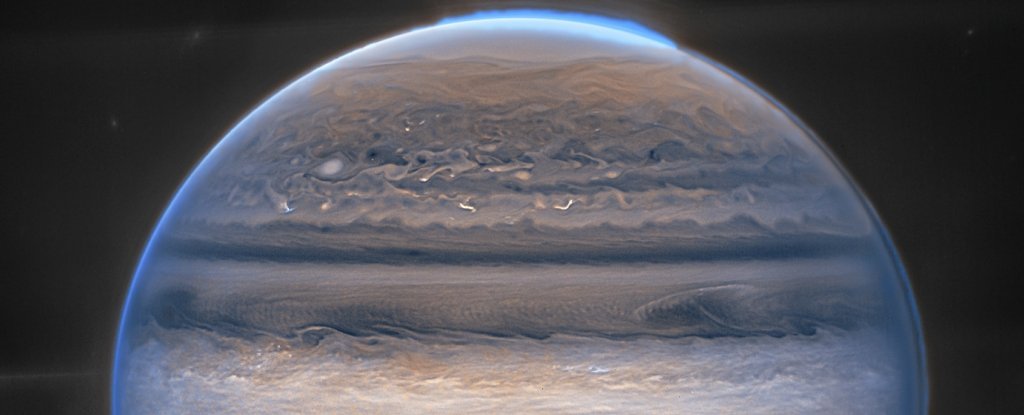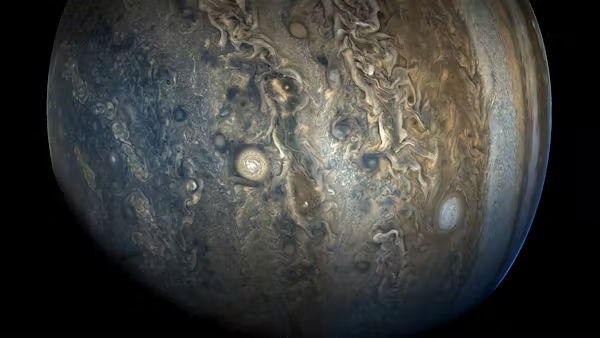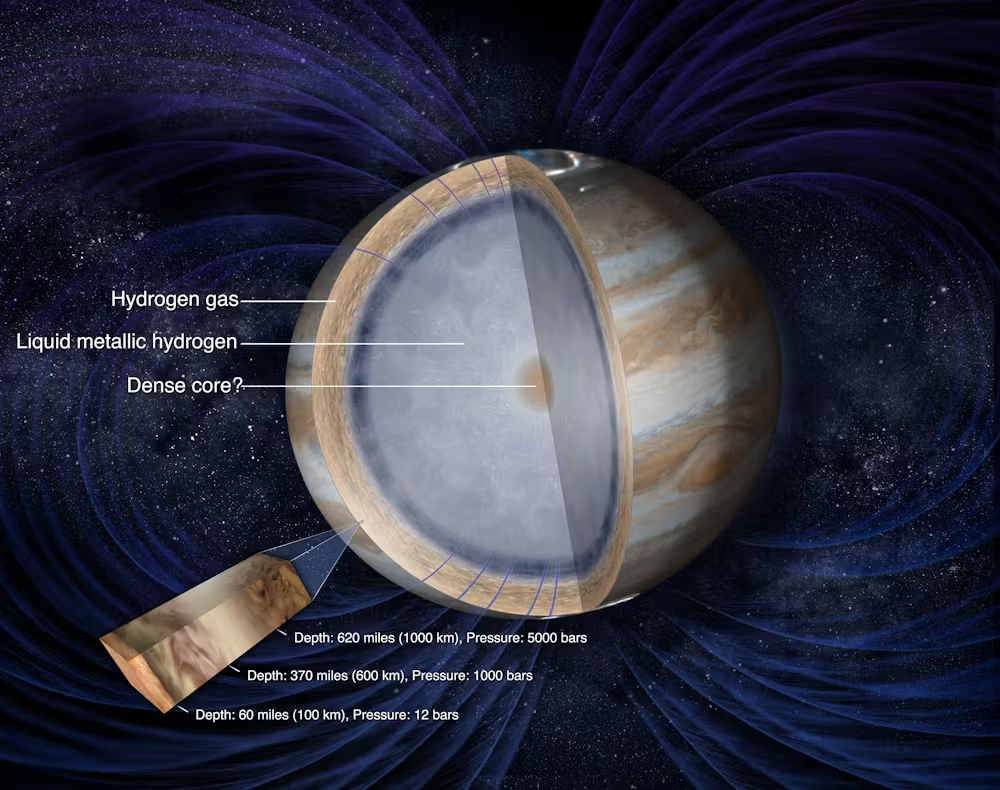Jupiter, the colossal fifth planet from the Sun, continues to baffle scientists with its sheer scale and complexity.
Unlike the rocky planets closer to the Sun, Jupiter is a gas giant, lacking any solid ground to stand on.

This presents a peculiar reality; how can such a massive entity exist without a surface?
The enormity of Jupiter is staggering.
It is so immense that it could harbor over 1,000 Earths within it.
Yet, despite its size, this largest planet in our solar system is composed largely of swirling gases, primarily hydrogen and helium, similar to the Sun.
With its tumultuous storms and blistering winds reaching speeds of over 400 mph, Jupiter is a dynamic spectacle of nature.

As you descend through its thick, gaseous layers, the pressure intensifies drastically, akin to being deep beneath an ocean, though this ocean is composed of gas.
This pressure transition leads to fascinating transformations.
At around 1,600 kilometers down, the gaseous hydrogen morphs into an ocean of liquid hydrogen, potentially the largest in our solar system.

Further into Jupiter’s depths, the hydrogen becomes metallic, an exotic state of matter, compressing and freeing electrons to move like a liquid metal.
The gradual nature of these transformations means there are no abrupt divisions or solid boundaries.
In essence, Jupiter’s atmosphere transitions seamlessly into these extraordinary states without offering a solid surface at any point.
Deeper still lies Jupiter’s core, a subject of continued scientific mystery.
It is thought to be a mix of hot and dense materials, possibly in a liquid or metallic state, enduring pressures a million times those at Earth’s sea level.
This core’s extreme heat, reaching three times that of the Sun’s surface, would obliterate any spacecraft attempting to reach it.
Despite its inhospitable nature, Jupiter plays a pivotal role in making Earth habitable.
It acts like a cosmic shield, averting dangerous asteroids and comets from the inner solar system with its strong gravitational pull.
This protective behavior may indeed be one reason life on Earth was allowed to flourish, preventing catastrophic impacts similar to those believed to have caused past extinctions.
Yet, while Jupiter itself remains a challenging environment for life as we know it, its moon Europa sparks interest as a potential host for extraterrestrial life.
NASA’s planned Europa Clipper mission aims to explore this moon, investigating its vast subsurface ocean that might harbor conditions conducive to life.
However, any answers will remain elusive until the probe reaches the distant moon in 2030.
Jupiter remains an enigmatic giant, captivating scientists and casual observers alike with its mysteries.
While our understanding deepens with missions like NASA’s Juno probe, much about this gas giant awaits discovery, holding countless secrets in its massive, swirling depths.
